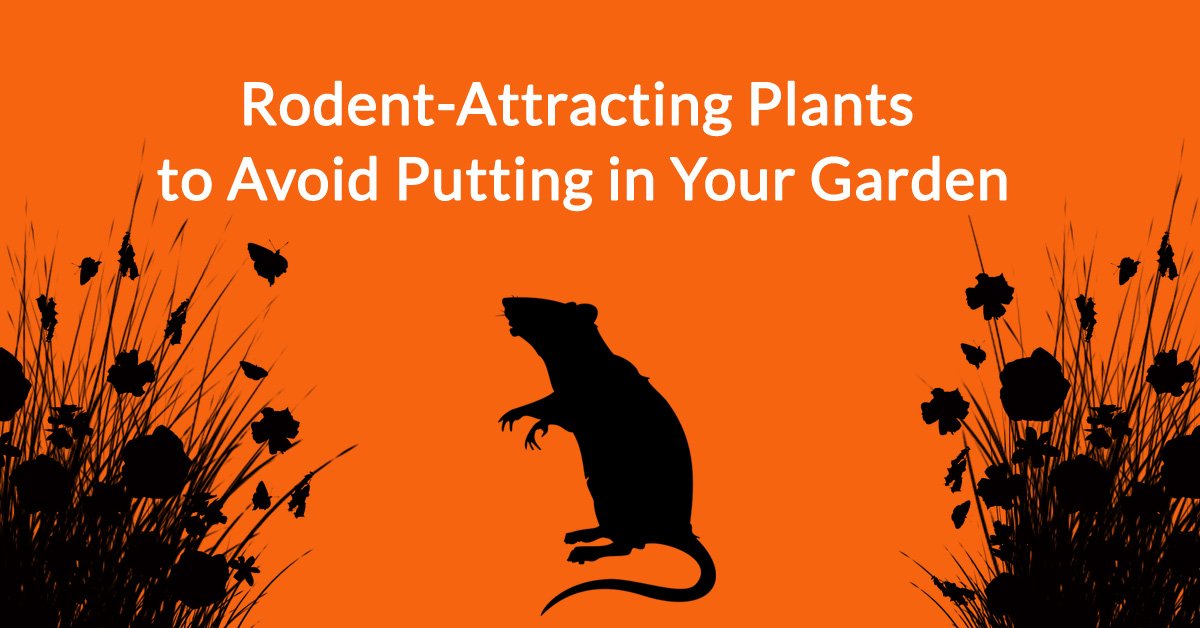
Rodent-Attracting Plants to Avoid Putting in Your Garden
Guest Blog by Arnie Dorr

Planting some greenery is a great way to combat those COVID-19 blues that come from self-quarantine. Social distancing is necessary to stay safe, but you don’t have to stay inside in beautiful weather. In fact, gardening is becoming more popular now, as families plan their summer activities. And one of the best things about summer is plucking beans, peppers, corn, and tomatoes right from the garden. Fresh veggies at their finest!
Experienced gardeners know dealing with mice, bugs, and invasive weeds goes with the territory. Tell-“tail” signs will let you know if there are mice and other critters living within or near the garden. If you find nesting areas under trash, drain pipes, sheds, woodpiles, and mulch, chances are the critters are having a field day in your garden. Mice, rats, and voles can cause a lot of damage beyond eating all your fruits and vegetables.

Field mice eat nuts, berries, seeds, and small insects. They also enjoy leafy garden vegetables and houseplants — if there’s nothing more palatable on the menu. To keep mice out of the garden, do not plant corn or sunflowers. They love the kernels. Grass seed and grains are also favorite snacks for mice and rats. These rodents typically eat seeds from the ground without disturbing the soil.
Rats might eat vegetables and fruits in a garden, but only if there’s nothing else available. They eventually move on to areas with meats, grains, oils, and other fats. (Keep the garbage can lid tightly closed!)

If there's no corn, grain or seed to munch on, rodents will visit the garden to feed on:
- Cabbage
- Carrots
- Cauliflower
- Leaks
- Peas
- Turnips
- Potatoes
- Zucchini
- Tulips
These, along with green beans, are plants to avoid putting in your garden if you don't want to attract mice.
Invasive Plants

While there are good plants that help keep mice and other rodents from nibbling on flowers, fruits, and vegetables, mice aren’t the only invaders to worry about. Invasive species of plants can wreak havoc in your garden. The U.S. Forest Service defines invasives as “nonnative (or alien) to the ecosystem.” Bringing these plants into your yard may cause damage to the environment or harm humans and pets.
Aloe Vera. There’s no telling how many “babies” one Aloe Vera plant can produce, but they can go on for generations. Plant one aloe and your garden will be full of them before you know it! Succulent aloes are great for healing -- break a frond in half and smear the sap over burns and bug bites. But, ingesting this sap is toxic and can cause serious stomach maladies.
Bamboo. Planting bamboo in your garden is a recipe for disaster. Place this propagating stuff in containers, instead. Bamboo is pretty to look at, sturdy to use, and one of the most sustainable and renewable building resources around the globe. But it could spread about your yard and to neighboring properties.
Belladonna. The common name is deadly nightshade, and that says it all! Belladonna has pretty purplish bell-shaped blooms, blackberries, and lush green leaves. But it's toxic to people and pets.
Japanese Barberry. This deciduous shrub may look pretty but it draws black-legged ticks that can carry Lyme disease. There are other shade-tolerant and drought-resistant varieties that are better choices for your garden.
Mimosa. This tree family has stunning fern-like leaves and exotic pink flowers, but don’t let its beauty fool you. Mimosa trees and shrubs are invasive. They drop seedlings everywhere and when the wind catches them, they’ll grow all over the neighborhood.
Wisteria. With sharp, contrasting and cascading purple blooms, wisteria is a draw for flower gardens. But its root system spreads everywhere — you’ll see shoots sprouting up to strangle other trees and shrubs. This plant is also attractive to mice.
Good Garden Plants

Just as there are plants to avoid, there are varieties of fruit and vegetable plants to add, such as peppers, cucumbers, and broccoli. Plant some apple, orange and peach trees; there’s nothing like pulling a piece of fruit from a branch, washing off the bug spray and taking a bite.
Plants and herbs known to keep mice and other rodents away include:
- Marigolds
- Garlic
- Daffodils
- Black pepper
- Rosemary
- Lavender
- Onions
- tomatoes
You don’t have to give up the garden to keep mice and rats out of your yard, you just have to be mindful of the plants to avoid putting in your garden. If you have your heart set on green beans, peas, or tulips, set a quick-kill trap next to the garden and read up on pest control best practices. These are all options you’ll have to weigh or the rats and mice will play.
Arnie Dorr is a landscaper and gardener who prides himself on being eco-friendly. He maintains a garden and green lawn without using chemicals. His garden is filled with herbs and native plants that attract pollinators.
- Choosing a selection results in a full page refresh.
!

